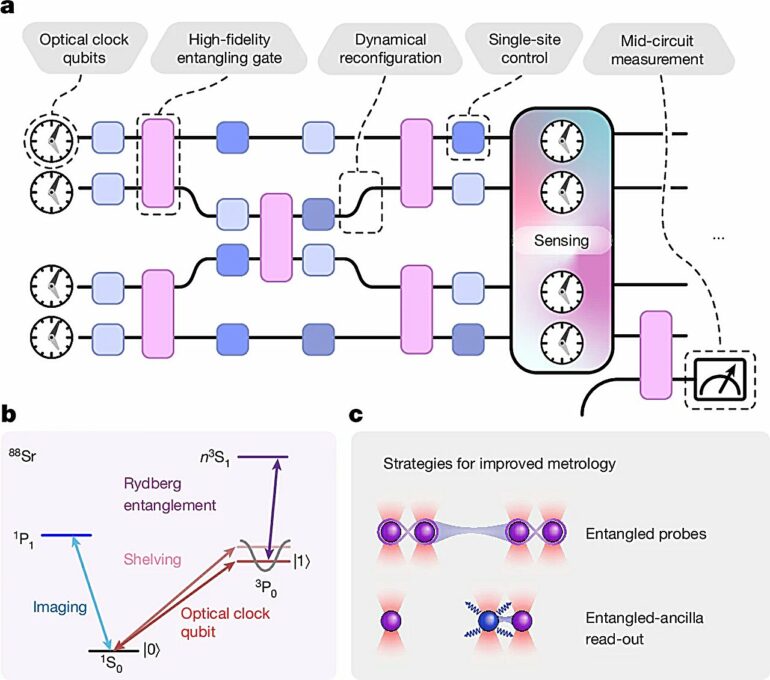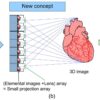Physicists like to measure things, and they like those measurements to be as precise as possible. That means working at unfathomably small scales, where distances are much smaller than even the diameters of subatomic particles. Researchers also want to measure time down to a precision of less than one second per tens of billions of years. The quest for these ultraprecise measurements in physics is part of a growing field called quantum metrology.
Now, as reported in the journal Nature, a Caltech team led by Professor of Physics Manuel Endres has developed a new device that could lead to some of the most precise time measurements ever achieved. The method merges state-of-the-art atomic clocks with quantum computers.
“Our goal is to get to the ultimate precision allowed by nature,” Endres says. “We have now demonstrated the building blocks to get there.” The lead authors of the study are former Caltech postdoctoral scholar Ran Finkelstein, now at Tel Aviv University, and Caltech graduate students Richard Bing-Shiun Tsai and Xiangkai Sun.
The device that allows these precise time measurements will help physicists better probe the laws of nature, such as Albert Einstein’s general theory of relativity, and study some of the hardest problems in physics, such as the nature of dark matter. Detailed measurements of this sort are also needed to detect gravitational waves, the quietist ripples in space-time. (LIGO, the Laser Interferometer Gravitational-wave Observatory, managed by Caltech and MIT, recently achieved its own milestone in quantum metrology.)
Endres’s group has previously developed “tweezer clocks,” which consist of arrays of neutral strontium atoms, in which each atom is individually controlled by lasers (the tweezers). By themselves, tweezer clocks are highly precise at marking the passage of time. In the new study, the researchers have demonstrated how to perform quantum computations in a tweezer clock in order to make the clocks even more precise.
“Atomic clocks use quantum mechanics to measure time, while quantum computers use quantum mechanics to perform calculations,” Endres says. “Here, we are working at the interface of both.”
The challenge lies in entangling the atoms in the tweezer clock array. Entanglement is a phenomenon that occurs at quantum scales, in which particles become linked together without being in direct contact. “You can reach more precision if the atoms are entangled,” Endres says, “but we need a very specific complex form of the entanglement.”
The new study demonstrates that this entanglement is possible and, in general, that quantum computers can be integrated with quantum sensors such as atomic clocks. In the future, the researchers hope to further reduce errors in the system to bring their clocks even closer to theoretical limits of precision.
More information:
Manuel Endres, Universal quantum operations and ancilla-based readout for tweezer clocks, Nature (2024). DOI: 10.1038/s41586-024-08005-8. www.nature.com/articles/s41586-024-08005-8
Provided by
California Institute of Technology
Citation:
Merging atomic clocks with quantum computers could lead to ultraprecise measurements of laws of nature (2024, October 9)



